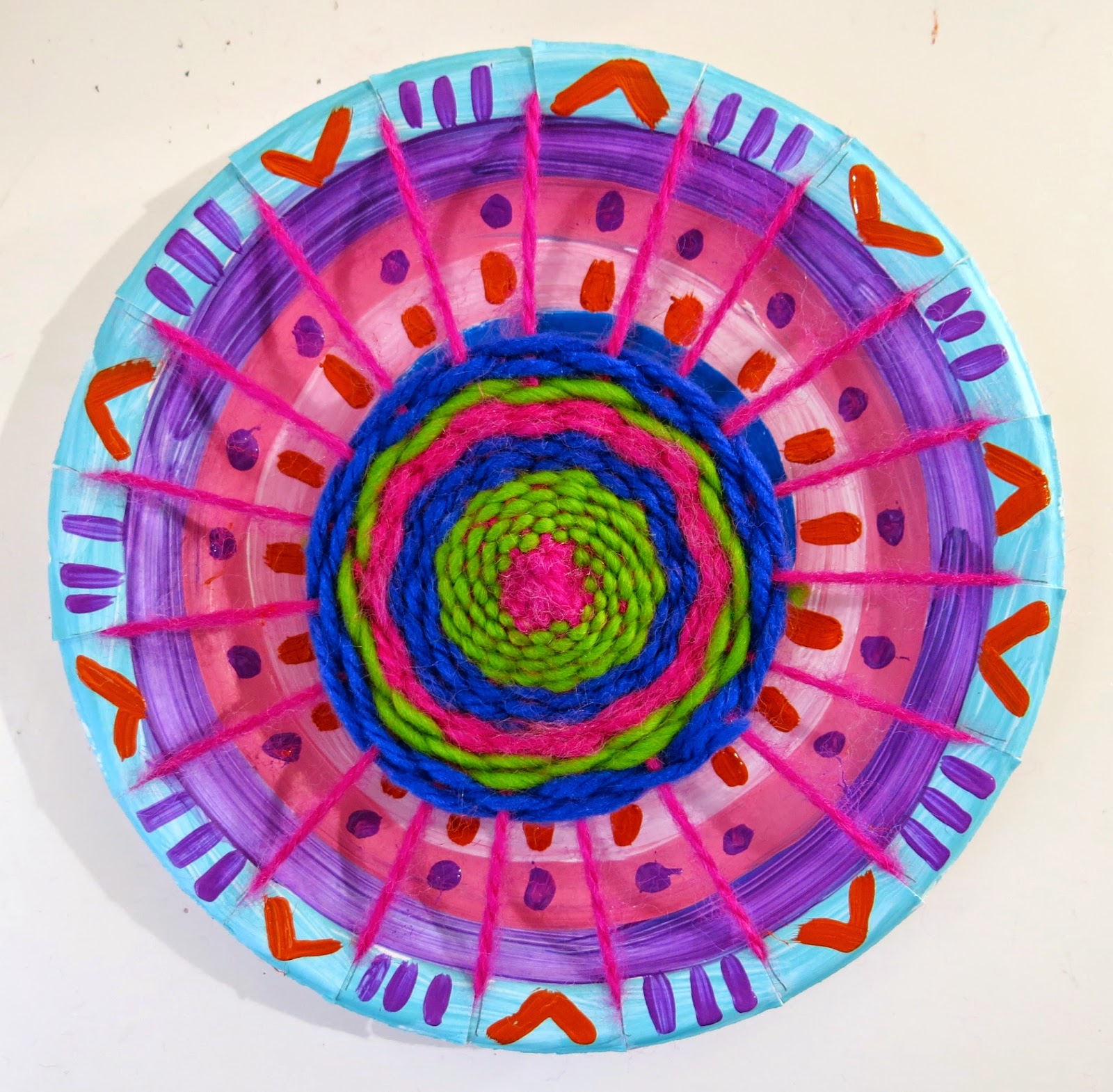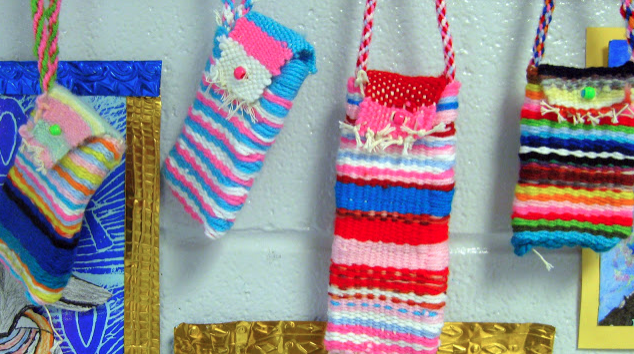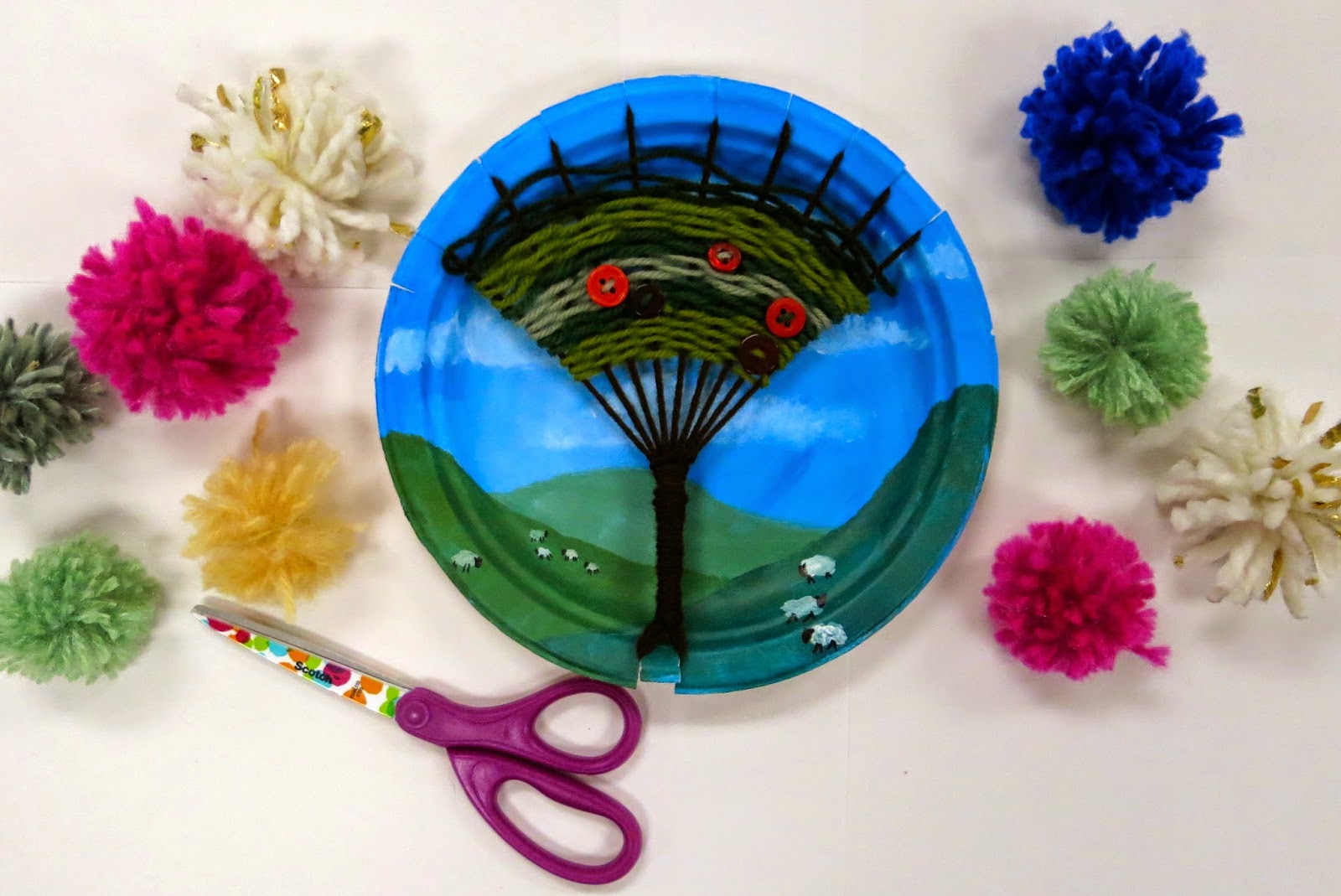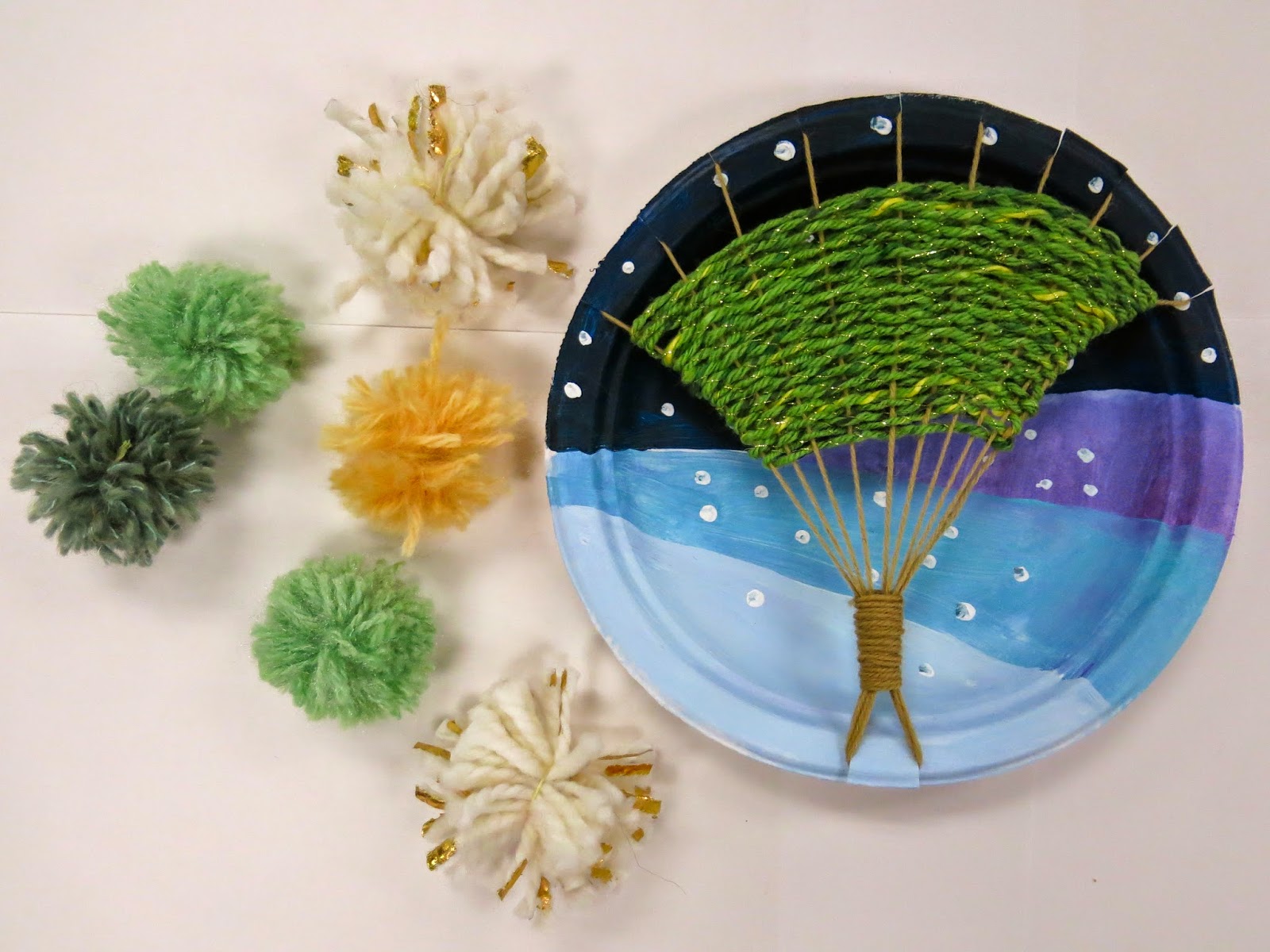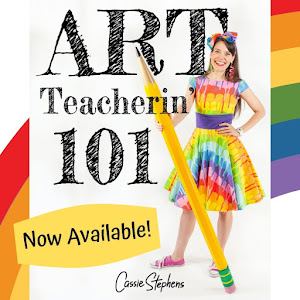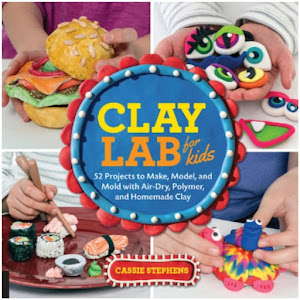When it comes to art lessons, I'm not much of a repeat offender. Since I like to change up the cultural theme of my art room every year, my lessons usually follow suit. However, I always have my 2nd grade create a circle loom weaving for a coupla reasons:
* It's excellent for building fine motor skillz and pumpin' up those wee hand muscles. And what kid doesn't want super strong man-hands?
* It's chock full o math connections: measuring, pattern making, long division (okay, maybe not that last one but you get the idea.)
* It reaches those kids that might otherwise slip through the art cracks (dude! what if there were such a thing as "art crack"?! Would that be like the equivalent of huffing a sharpie and drinking the paint water?!) Particularly my boy students. They absolutely thrive on weaving, being the tactile learners that they are. In fact, I overheard one little guy tell a buddy whilst weaving, "this is the best day of my life, I love this!" Daawwww.
All that being said, I've not been in love with how I've taught circle loom weaving in the past. Usually when we wove on a plate, we simply started with a blank Chinet plate, created our weaving and used markers to color the rim of the plate (go here and scroll down to 2nd grade art to see). Last year, in an effort to change things up a bit, we did the whole weaving on a CD thang which was cool and all but I still wasn't in love with the end result.
This year, in an effort to try something totes different but still make sure the kids got in their much needed weaving time, I opted to have them paint their plates before attaching them with woven greatness.
Wait, you wanna make a Painted Plate Circle Loom Weaving too?! Okay, kids, russell up the following:
Chinet Plates. Ya'll don't use anything less. These bad boys are as good as a canvas as far as plate-painting-surfaces go.
Tempra Paint. I only use Crayola's Washable Paint. The colors are about as good as it's gonna get in an elementary classroom.
A Loom Template. You'll thank me later, ya'll.
Yarn and Beads.
Over the course of 2-ish art classes, we painted these plates. On our first day, we chatted about Kandinsky's concentric circle paintings and created our own. The following art class was spent using the World's Smallest Paint Brushes to craft those patterns that you see. By the way, if these look a pinch familiar to you, I shared these plates in a recent post about (attempting) to teach good craftsmanship.
Once the plates are painted and patterned, I give the kids a loom template with exactly 19 notches (not nachos) cut into it. The kids are to trace these notches onto the rim of their plate, count to check that they only have 19 lines to cut (because there will be the rando kid that has 55 lines drawn everywheres) and then cut the lines on the rim of the plate. I encourage them not to cut beyond the rim as this will make for a saggy weaving. Which sounds about as ugly as it is.
Once the kids have their plates (which we now call our looms) cut, they are to grab a small skein of warping string and meet me on the floor. For the correct amount of warping string, I wrap the yarn from my hand to my elbow five times. These small bundles are available in a variety of colors for the kids to choose from.
Now. Let's talk about teaching the kids to warp their looms. Which can either be like watching a train wreck happen in slow motion or a piece of cake. Lemme show you the cake route cuz, well, everybody loves cake.
First of all, when we are all seated on the floor, with our looms and warp string in front of us, ain't nobody allowed to touch nuthin until I say "go". You even think about touching that loom and yarn and Ima gonna snatch it up. Because, you know wuz about to happen. They'll think they've got it, fiddle around and not catch a bit of direction and the next thing you know, you've got a class of 20 all train-wreckin-it-up. So. Watch me and wait for the "go".
First step: Put the tail end of the yarn in any notch. There should be a short tail about the length of your finger in the back while the rest of the yarn hangs loose and free in the front. Go. (I tell the kids that their "go" signal to me for the next step is to put their weavings on the floor in front of them. When I see that, I can proceed.)
Next: Bring the length of yarn down dividing the plate in half (see above photo). But, there's a catch. Be sure that there are 8 empty notches on the left side and 9 on the right. That's muy importante, ya'll. Go.
Now: (see left photo) Take the long length of string and have it "go to the right neighbor's house" meaning have your string go in the next notch on the right hand side. Now, this neighbor is super rude and it shouts, "get outta my house!" so the string runs all the way across the plate (see right photo) and makes the World's Smallest X.
Next: Rotate the plate so that the length of string is at the bottom (left picture). That story I just told about the string getting kicked out of the neighbor's house? It's a pattern. Which means it's gonna repeat. So, let's do it again! Go to the right neighbors house. Get kicked out. Go across the street and make the World's Smallest X. Rotate the plate.
After watching this routine, the kids walk me through completing my plate warping by repeating this as I go:
Go the neighbor. Get kicked out. Make World's Smallest X. Rotate the Plate.
Which gets shortened to:
Neighbor. Out. X. Rotate.
You'll know you're finished when your little string has no home to go to. And that will be your weft or weaving string!
The following art class, we start to weave with that wee string.
The first day of actual weaving is usually the toughest. I tell 'em over and under until I'm blue in the face...and they get it. That is until they pull the string tightly to the middle and it looks like this:
And then they're all "whuh, huh? whuh just happened to my string?"
At this point, I tell them that they might have to loosen their weaving a bit to see just what they did previously. This will put them back on over-and-under track. When their weft is as long as their hand, they are to double knot tie a new string to the end. It can be a tough first day...but I repeat over and again: Your first day of weaving is the hardest. But you'll get this. And you'll love it.
And when they do, without sounding like some sappy art teacher, it's pure magic.
During our weaving sessions, some kids sit on the floor with me and we chat and get to know each other. We've taken weavings outside on sunny days and sat under trees. We lay on the floor or relocate to tables where our buddies sit. It makes for such a fun and relaxing environment.
Since the kids really caught on fast to weaving this year, I thought I'd throw out the option of adding pony beads. Some kids took to it right away, complimenting their designs with a beaded pattern.
And others opted out, content to just weave until they reached their limit of a 4" diameter. Once weavings were complete, the last of the weft strings was double knot tied to a warp spoke.
The weaving portion of this project only took us 2-ish 30 minute art classes. Since I limited the diameter to 4" (because I hated the thought of their beautiful paintings being hidden AND because the kids will seriously weave For.Eve.Rrr. if not limited), the project ended up being rather quick. By my weeks-long-art-project standards.
The weaving portion of this project only took us 2-ish 30 minute art classes. Since I limited the diameter to 4" (because I hated the thought of their beautiful paintings being hidden AND because the kids will seriously weave For.Eve.Rrr. if not limited), the project ended up being rather quick. By my weeks-long-art-project standards.
I think I can happily say, I'm thrilled with these circle loom weavings. I will definitely be sticking with this painted plate loom lesson. It's become a new weaving fave. To finish these guys off, the kids will tie a "hanger" of yarn at the top so these can be displayed for our upcoming art show!
By the way, I've shared a couple of weaving posts on this here blog. Some of my faves are the following:
What are your fave weaving projects? I'd love to hear!

























